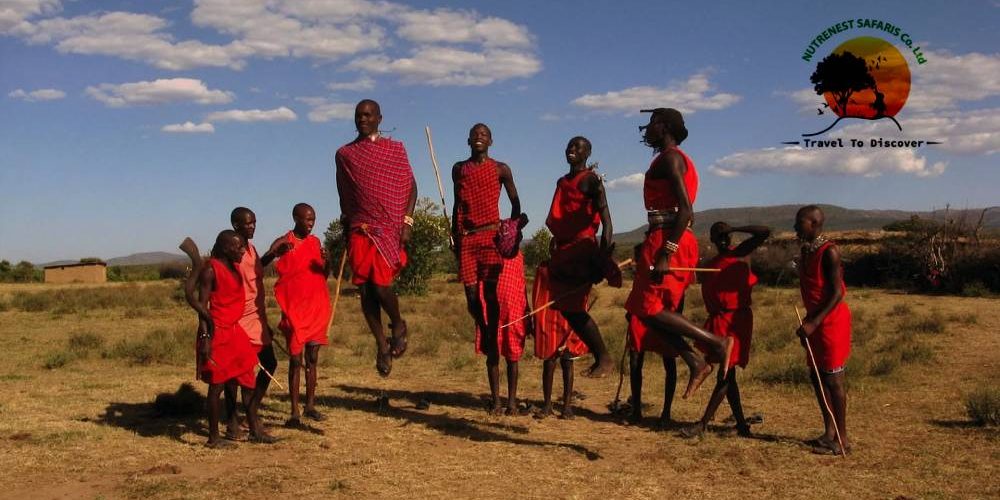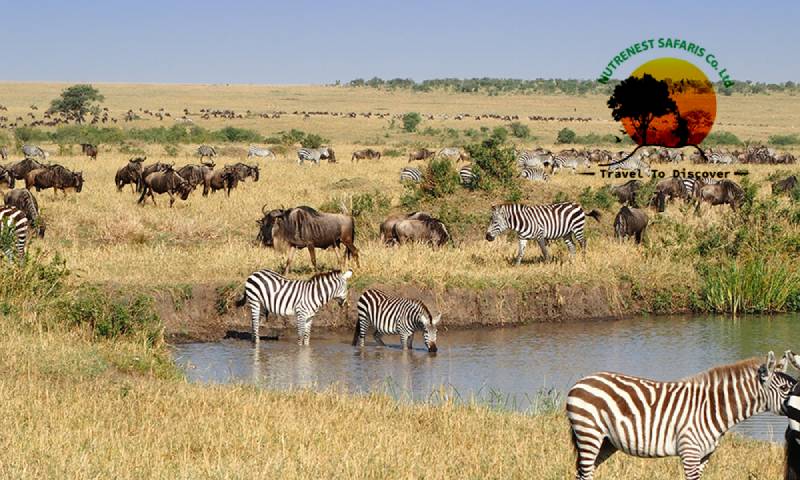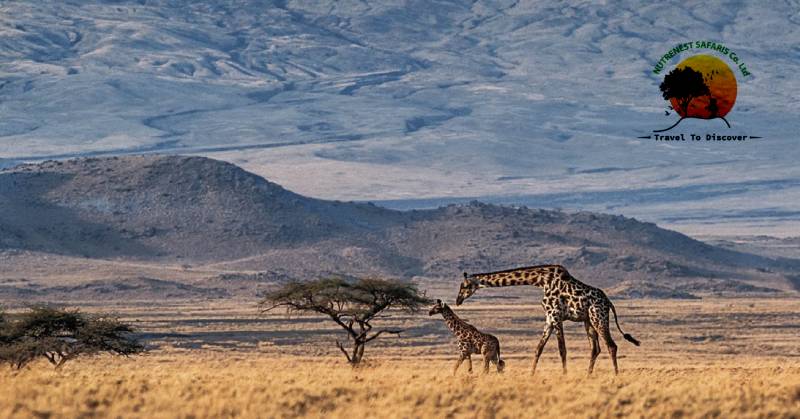The Maasai people are among the most well-known indigenous communities in Africa, renowned for their distinctive culture, traditional way of life, and strong connection to the land. Living primarily in Kenya and northern Tanzania, the Maasai have made the Maasai Mara their home for centuries. This vast savannah, which is also one of the most famous wildlife reserves in the world, is intrinsically linked to the Maasai culture. For many travellers, the Maasai people represent a living link to ancient Africa, as their way of life remains closely tied to the environment and wildlife of the Mara. Today we will explore the cultural significance of the Maasai people in the Mara, focusing on their traditions, their relationship with the land, and their role in modern conservation efforts. It is possible to meet them during Masai Mara safaris with us at Nature Nest Safaris.
The Origins and Identity of the Maasai People
The Maasai people are part of the larger Nilotic ethnic group, believed to have migrated from the Nile Valley to East Africa around the 15th century. As semi-nomadic pastoralists, their livelihood and identity are deeply intertwined with cattle, central to their economy, culture, and spiritual beliefs.
Maasai Culture and Traditions
The Maasai culture is rich in traditions passed down through generations. Their customs, from dress to language, music, and dance, reflect their close-knit community and respect for their heritage.
Traditional Attire and Jewelry
The Maasai people are instantly recognizable by their traditional attire, known as the “shuka,” a red cloak or blanket worn by both men and women. The colour red symbolizes strength, bravery, and protection against wild animals, which is vital in the Mara’s untamed landscape. Maasai women are also known for their intricate beadwork, which plays a significant role in their identity. The beaded jewellery they wear, often in elaborate patterns and bright colours, communicates various aspects of their social status, age, and role in the community.
Music, Dance, and Oral Tradition
Music and dance are integral to the Maasai culture, particularly during important community events and ceremonies. The “adumu,” also known as the jumping dance, is a famous Maasai ritual performed by warriors, showcasing their strength and endurance. The Maasai are also known for their rich oral tradition, passing down stories, myths, and history through generations. Elders in the community are responsible for preserving these oral traditions, ensuring that younger generations learn about their ancestry, values, and spiritual beliefs.
The Relationship Between the Maasai and the Land
The Maasai’s connection to the land is profound, rooted in a sustainable way of life that has allowed them to coexist with the wildlife of the Mara for centuries. As pastoralists, they rely on the land not only for grazing their cattle but also for their cultural identity. The Maasai believe they are custodians of the land, with a responsibility to protect and preserve it for future generations. You can have cultural exchange with them in Mara during the Wildebeest Migration.
Nomadic Pastoralism and Land Stewardship
Historically, the Maasai were semi-nomadic, moving their herds in search of fresh grazing pastures and water. This nomadic lifestyle helped to prevent overgrazing and allowed the land to regenerate. Over time, however, the expansion of national parks and wildlife reserves has reduced the Maasai’s access to land, forcing many to adopt a more sedentary lifestyle. Despite these changes, the Maasai continue to practice sustainable land management, ensuring that their cattle and the local wildlife can coexist without depleting the natural resources of the Mara.
Sacred Sites and Natural Landmarks
The Maasai hold certain natural landmarks in the Mara as sacred, with mountains, rivers, and trees often playing a role in their spiritual practices. These sacred sites are protected and respected by the community, symbolizing the deep spiritual connection between the Maasai people and the land. For example, the Oloololo Escarpment, which forms part of the Maasai Mara’s western boundary, is a significant feature in their mythology and history.
The Role of the Maasai in Modern Conservation Efforts
The Maasai’s traditional knowledge of the land and its ecosystems makes them invaluable partners in conservation efforts in the Mara. As wildlife habitats face increasing threats from climate change, tourism, and human encroachment, the Maasai have been actively involved in initiatives to protect the environment and ensure the sustainability of the Mara’s rich biodiversity.
Community-Based Conservation Projects
Many community-based conservation projects in the Maasai Mara involve the Maasai people as stewards of the land. These projects aim to create a balance between preserving wildlife and supporting the local communities. Maasai landowners are often compensated through programs like “conservation leases,” where they agree to limit grazing in certain areas to allow wildlife to thrive. In return, they receive financial support, which helps to sustain their families and cultural practices.
Eco-tourism and Cultural Tourism
Eco-tourism is a growing industry in the Maasai Mara, and the Maasai people play a key role in its success. Many Maasai villages offer cultural tours to visitors, allowing them to experience traditional Maasai life, including dance performances, beadwork demonstrations, and visits to local homesteads (known as “enkangs”). These cultural experiences not only provide tourists with a deeper understanding of Maasai traditions but also generate income for the Maasai community, helping to fund education, healthcare, and conservation initiatives.
Furthermore, many luxury lodges and camps in the Mara employ Maasai guides, whose deep knowledge of the land and wildlife enriches the safari experience for visitors. Their role as guides fosters a greater appreciation for the delicate balance between the Maasai people, the environment, and the wildlife that inhabits the region.
Challenges Facing the Maasai Community
Despite their vital role in the ecosystem, the Maasai face numerous challenges in modern times. Land rights issues, climate change, and economic pressures are some of the main challenges they encounter as they strive to maintain their traditional way of life.
Land Rights and Access
The creation of national parks and wildlife reserves has significantly reduced the land available to the Maasai for grazing their cattle. In addition, private land sales and government policies have led to land disputes and displacement for some Maasai communities. Access to water and pasture is increasingly limited, especially during droughts, leading to tensions between wildlife conservation and the Maasai’s livelihood needs.
Cultural Preservation in a Changing World
As globalization and modernization reach the Masai Mara, younger generations are increasingly exposed to new ways of life. Many young Masai are leaving traditional pastoralism to seek education and employment in urban areas. While this provides opportunities for development, it also poses a challenge to the preservation of Masai culture and traditions.
The Masai people are an integral part of the Masai Mara ecosystem, with their culture, traditions, and land stewardship playing a significant role in the preservation of this unique region. As the Masai continue to navigate the challenges of modernity, their knowledge and traditions remain vital to the protection of the Mara’s wildlife and environment. You can be with us to enjoy Rwenzori hiking safaris and learn more about the cultural heritage of the Masai people.



